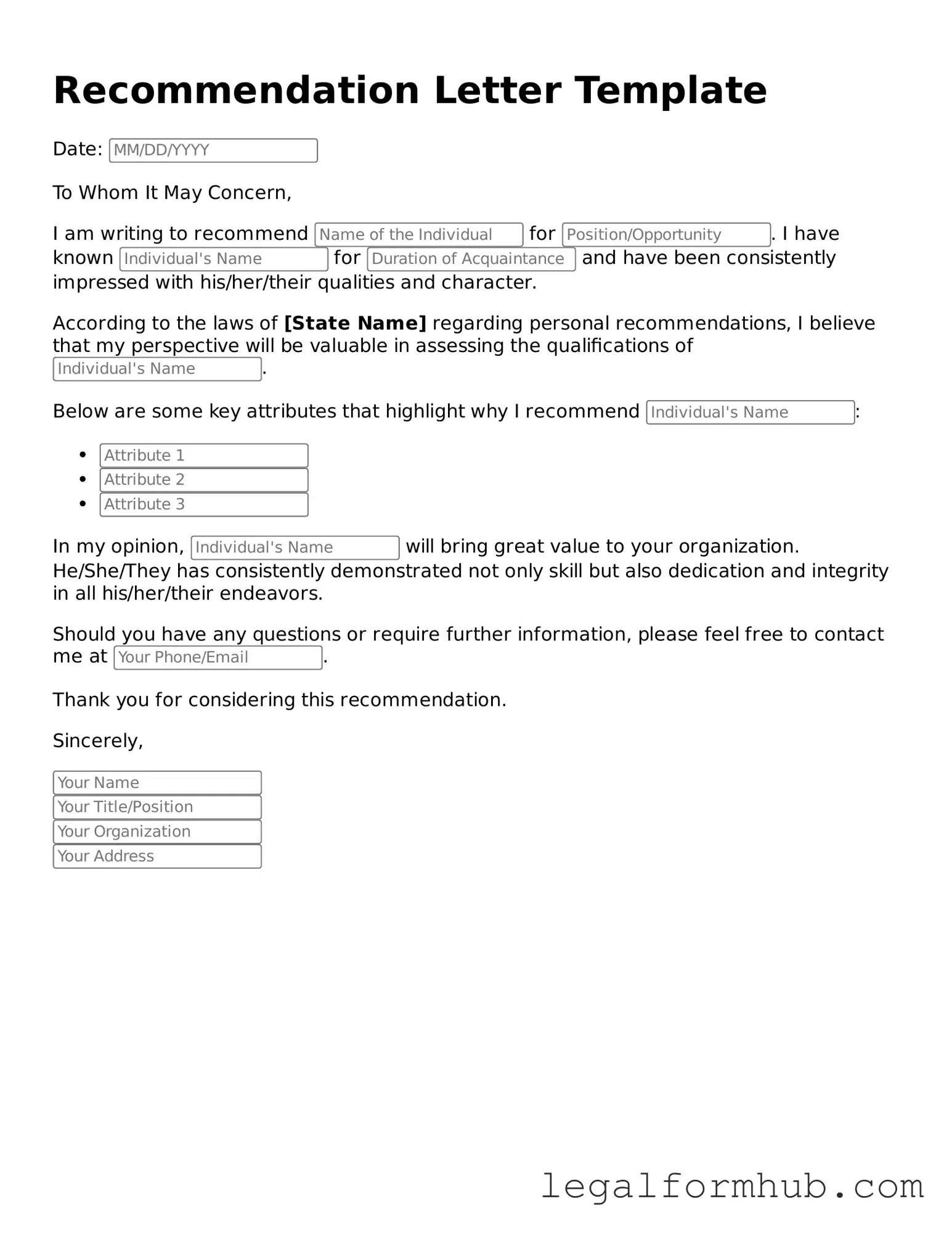A reference letter serves a similar purpose to a recommendation letter, as both are written to endorse an individual’s abilities and character. Typically requested by potential employers or educational institutions, reference letters provide insights into a person's skills and work ethic. While a recommendation letter may focus more on specific achievements, a reference letter often includes a broader perspective on the individual’s overall capabilities and personal qualities.
A character reference letter is another document akin to a recommendation letter. This type of letter is usually written by someone who knows the individual well, such as a friend or community member, rather than a professional contact. It emphasizes personal traits and moral character rather than professional accomplishments, making it a valuable addition to applications where personal integrity is paramount.
An employment verification letter shares similarities with a recommendation letter, as it confirms an individual's employment history and role within a company. While it may not provide a personal endorsement, it serves to validate the information presented in a recommendation letter. Employers often request this document to ensure that candidates have the experience they claim to possess.
An academic reference letter is particularly relevant for students applying to colleges or universities. Much like a recommendation letter, it highlights the student’s academic achievements and potential for success in further education. However, it often comes from a teacher or professor who can speak directly to the student’s abilities in a classroom setting, providing a different angle of insight.
For those looking to navigate the complexities of vehicle transactions, a well-structured document like a detailed Motor Vehicle Bill of Sale is essential. This legal form not only confirms the sale but also protects the interests of both parties involved in the process.
A personal statement is another document that bears resemblance to a recommendation letter. While it is written by the individual rather than someone else, it serves to articulate personal experiences, goals, and motivations. This document can complement a recommendation letter by offering a more intimate view of the individual’s aspirations and character.
A performance review is similar in that it assesses an individual's work performance, providing feedback on strengths and areas for improvement. While it is typically an internal document, it can serve as a formal endorsement of skills and contributions, much like a recommendation letter does. Employers may reference performance reviews when drafting recommendation letters to ensure consistency in their evaluations.
A letter of intent is often used in academic and professional settings to express an individual’s goals and intentions. While it is not a recommendation letter, it can include references to past achievements and qualifications, similar to how a recommendation letter outlines a candidate’s strengths. This document helps establish the individual’s purpose and commitment to a specific program or position.
A testimonial letter, often provided by clients or customers, serves to endorse an individual's services or products. This document parallels a recommendation letter by offering a personal account of the individual's effectiveness and reliability. Testimonials can be particularly impactful in service-oriented professions, where personal experiences resonate strongly with prospective clients.
A cover letter can also be likened to a recommendation letter, as both documents are often submitted during job applications. While a cover letter is written by the applicant to introduce themselves and explain their interest in a position, it may also reference endorsements from others. This creates a connection between the applicant’s qualifications and the recommendations they have received.
Lastly, a portfolio can be seen as a collection of work samples that, while different in format, serves a similar purpose to a recommendation letter. Portfolios showcase an individual's skills and achievements, providing tangible evidence of their capabilities. When combined with recommendation letters, a portfolio can create a compelling case for an individual’s qualifications and potential contributions to a prospective employer or institution.
